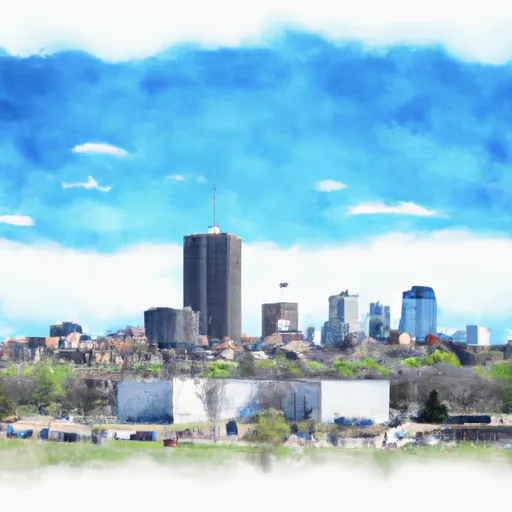-
 Snoflo Premium
Snoflo Premium
Get unlimited access to all our content
With no Ad interruptions! - Start Your Free Trial Login with existing account
Dakota
Eden Index
Climate
6.6
•
Recreation
3.4
•
Community
•
Safeguard
3.8/10

Dakota, Minnesota is located in the southern part of the state and has a humid continental climate. Summers are warm and humid, while winters are cold and snowy. Precipitation is fairly evenly distributed throughout the year, with the highest amounts occurring in the summer months.
The area is home to several rivers and lakes, including the Mississippi and Minnesota Rivers. These waterways provide opportunities for boating, fishing, and other water-based activities. The region is also dotted with parks and wildlife areas, offering hiking, camping, and hunting opportunities.
Hydrologically, Dakota is part of the Upper Mississippi River Basin and is subject to runoff from agricultural and urban development. Nitrogen and phosphorus are common constituents of water in this area, and can contribute to harmful algal blooms in lakes and rivers.
Overall, Dakota, Minnesota offers a variety of outdoor recreational opportunities, but visitors should be aware of potential water quality issues when engaging in water-based activities.
What is the Eden Index?
The Snoflo Eden Index serves as a comprehensive rating system for regions, evaluating their desirability through a holistic assessment of climate health, outdoor recreation opportunities, and natural disaster risk, acknowledging the profound impact of these factors on livability and well-being.
Climate Health Indicator (CHI): 6.6
Dakota receives approximately
896mm of rain per year,
with humidity levels near 82%
and air temperatures averaging around
8°C.
Dakota has a plant hardyness factor of
4, meaning
plants and agriculture in this region thrive during a short period during spring and early summer. Most
plants will die off during the colder winter months.
By considering the ideal temperature range, reliable water supplies, clean air, and stable seasonal rain or snowpacks, the Climate Health Indicator (CHI) underscores the significance of a healthy climate as the foundation for quality living.
A healthy climate is paramount for ensuring a high quality of life and livability in a region, fostering both physical well-being and environmental harmony. This can be characterized by ideal temperatures, reliable access to water supplies, clean air, and consistent seasonal rain or snowpacks.
Weather Forecast
Streamflow Conditions
Upper Mississippi-Black-Root
Area Rivers
Upper Mississippi-Black-Root
Snowpack Depths
Upper Mississippi-Black-Root
Reservoir Storage Capacity
Upper Mississippi-Black-Root
Groundwater Levels
Recreational Opportunity Index (ROI): 3.4
The Recreational Opportunity Index (ROI) recognizes the value of outdoor recreational options, such as parks, hiking trails, camping sites, and fishing spots, while acknowledging that climate plays a pivotal role in ensuring the comfort and consistency of these experiences.
Access to outdoor recreational opportunities, encompassing activities such as parks, hiking, camping, and fishing, is crucial for overall well-being, and the climate plays a pivotal role in enabling and enhancing these experiences, ensuring that individuals can engage in nature-based activities comfortably and consistently.
Camping Areas
| Campground | Campsites | Reservations | Toilets | Showers | Elevation |
|---|---|---|---|---|---|
| Powder Mill - Ozark National Scenic River | 8 | 561 ft | |||
| Owls Bend - Powder Mill | None | 556 ft | |||
| Onondaga Cave State Park | None | 791 ft | |||
| Hermann City RV Park | 20 | 509 ft | |||
| Graham Cave State Park | None | 778 ft | |||
| Two Rivers - Ozark National Scenic River | None | 608 ft | |||
| Roberts Field | None | 561 ft | |||
| Alley Spring - Ozark National Scenic River | 162 | 672 ft | |||
| Jerktail Landing | None | 657 ft | |||
| Greer Crossing | 72 | 564 ft |
Nearby Ski Areas
Catastrophe Safeguard Index (CSI):
The Catastrophe Safeguard Index (CSI) recognizes that natural disaster risk, encompassing floods, fires, hurricanes, and tornadoes, can drastically affect safety and the overall appeal of an area.
The level of natural disaster risk in a region significantly affects safety and the overall livability, with climate change amplifying these risks by potentially increasing the frequency and intensity of events like floods, fires, hurricanes, and tornadoes, thereby posing substantial challenges to community resilience and well-being.
Community Resilience Indicator (CRI):
The Community Resilience Indicator (CRI) recognizes that education, healthcare, and socioeconomics are crucial to the well-being of a region. The CRI acknowledges the profound impact of these elements on residents' overall quality of life. By evaluating educational resources, healthcare accessibility, and economic inclusivity, the index captures the essential aspects that contribute to a thriving community, fostering resident satisfaction, equity, and social cohesion.

